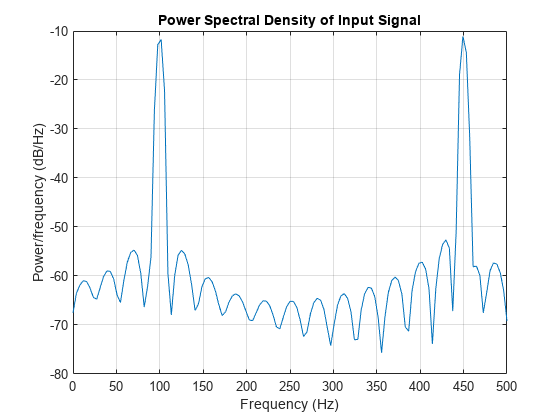modwptdetails
Maximal overlap discrete wavelet packet transform details
Syntax
Description
w = modwptdetails(x)x. The MODWPT details provide zero-phase
filtering of the signal. By default, modwptdetails returns
only the terminal nodes, which are at level 4 or at level
floor(log2(numel(x))), whichever is smaller.
Note
To decide whether to use modwptdetails or
modwpt, consider the
type of data analysis you need to perform. For applications that require
time alignment, such as nonparametric regression analysis, use
modwptdetails. For applications where you want
to analyze the energy levels in different packets, use
modwpt. For more information, see Algorithms.
[ returns a vector of transform
levels corresponding to the rows of w,packetlevs]
= modwptdetails(___)w.
[ returns w,packetlevs,cfreq]
= modwptdetails(___)cfreq, the
center frequencies of the approximate passbands corresponding to the MODWPT
details in w.
[___] = modwptdetails(___,FullTree=,
where tf)tf is false, returns details about
only the terminal (final-level) wavelet packet nodes. If you specify
true, then modwptdetails returns
details about the full wavelet packet tree down to the default or specified
level. The default value for tf is
false.
Examples
Input Arguments
Output Arguments
Algorithms
The MODWPT details (modwptdetails) are
the result of zero-phase filtering of the signal. The features in
the MODWPT details align exactly with features in the input signal.
For a given level, summing the details for each sample returns the
exact original signal.
The output of the MODWPT (modwpt)
is time delayed compared to the input signal. Most filters used to
obtain the MODWPT have a nonlinear phase response, which makes compensating
for the time delay difficult. All orthogonal scaling and wavelet filters
have this response, except the Haar wavelet. It is possible to time
align the coefficients with the signal features, but the result is
an approximation, not an exact alignment with the original signal.
The MODWPT partitions the energy among the wavelet packets at each
level. The sum of the energy over all the packets equals the total
energy of the input signal.
References
[1] Percival, Donald B., and Andrew T. Walden. Wavelet Methods for Time Series Analysis. Cambridge Series in Statistical and Probabilistic Mathematics. Cambridge ; New York: Cambridge University Press, 2000.
[2] Walden, A. T., and A. Contreras Cristan. “The Phase–Corrected Undecimated Discrete Wavelet Packet Transform and Its Application to Interpreting the Timing of Events.” Proceedings of the Royal Society of London. Series A: Mathematical, Physical and Engineering Sciences 454, no. 1976 (August 8, 1998): 2243–66. https://doi.org/10.1098/rspa.1998.0257.




